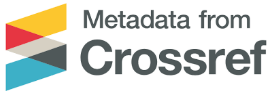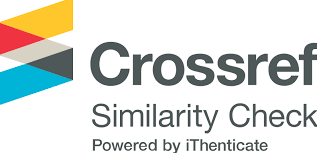Studying on the protective effectiveness of slice veneers from Lithocarpus ducampii A. Camus and peeled veneers from Litsea pierrei Lecomte treated with preservations against mold and basydiomycetes fung
Keywords:
Wood preservatives,, sliced veneer,, peeled veneerAbstract
Lithocarpus ducampii A. Camus and Litsea pierrei Lecomte are relatively
fast growing native plants, prospect in forests providing large timber. With
pink color, have a nice grain, Lithocarpus ducampii A. Camus wood can be
used for sawn timber and sliced veneer production. The logs of Litsea
pierrei Lecomte were relatively straight and the difference between ends of
the logs in relation to diameter was small, potential for making sawn
timber, peeled veneer. The natural durability of Litsea pierrei Lecomte and
Lithocarpus ducampii a. Camus is less resistant to mould. Litsea pierrei
Lecomte has medium durability with basidiomycetes fungi. During drying
or storage, veneer from those woods are easily attacked by mold, decay
fungi under conditions of high environmental humidity, especially for
factory without drying equipment. Study effectiveness of preservatives to
prevent wood harmful organisms making a scientific basis for building a preservation technological process. Peeled veneers and sliced veneers were
immersion in 30 - 90 minutes with LN5 concentration 5 - 7%, deliver the
performance of accepatable level 0 with mold, good - grade with
basidiomycetes Trametes corrugata T1. In case of specimens were dipped
in 1 minutes or more with BORAG2; in 40 seconds or more with BORAG1,
deliver the performance of accepatable level 0 and 1 with mold, good -grade with basidiomycetes Trametes corrugata T1.
References
1. AWPA E24 - 06, Standard method of evaluating the resistance of wood product surfaces to mold growth.
2. Nguyễn Văn Đức, 2004. Nghiên cứu xây dựng quy trình công nghệ bảo quản cho ván dán ba lớp. Luận án tiến sỹ, Viện Khoa học Lâm nghiệp Việt Nam.
3. Võ Đại Hải, Bùi Thị Thủy, Hoàng Thị Tám, Đoàn Thị Bích Ngọc, Nguyễn Thị Hằng, Nguyễn Văn Đức, 2019. Đánh giá độ bền tự nhiên của gỗ Bời lời vàng (Litsea Pierrei Lecomte) và Dẻ đỏ (Lithocarpus Ducampii A. camus) với các sinh vật gây hại chính trong điều kiện phòng thí nghiệm. Tạp chí Khoa học Lâm nghiệp số 2, tr. 129-137.
4. Nguyễn Thị Bích Ngọc, Bùi Thị Thủy, Đoàn Thị Bích Ngọc, Hoàng Thị Tám, Nguyễn Thị Hằng, Bùi Văn Ái, Nguyễn Văn Đức, 2019. Nghiên cứu khả năng phòng chống nấm mốc hại gỗ của thuốc bảo quản dạng boracol. Tạp chí KHLN, số đặc biệt kỷ niệm 45 năm Viện Nghiên cứu Công nghiệp rừng, tr.106-113.
5. Nguyễn Thị Bích Ngọc, Bùi Thị Thủy, Bùi Văn Ái, Nguyễn Văn Đức, Đoàn Thị Bích Ngọc, Hoàng Thị Tám, Nguyễn Thị Hằng, 2019. Nghiên cứu khả năng phòng chống nấm mục hại gỗ của thuốc bảo quản dạng boracol. Tạp chí Khoa học Lâm nghiệp, số đặc biệt kỷ niệm 45 năm Viện Nghiên cứu Công nghiệp rừng, tr.114-120.
6. Olavi Liukkonen, 1996. Veneer and Plywood manufacture, Finland, pp. 1-52.
7. Quyết định số 03/QĐ-BNN-BVTV ngày 03/1/2017 về “Danh sách thuốc bảo vệ thực vật chứa hoạt chất Carbendazim, Benomyl và Thiophanate-methyl loại bỏ ra khỏi Danh mục thuốc bảo vệ thực vật được phép sửdụng tại Việt Nam”.
8. TCVN 10753:2015 Thuốc bảo quản gỗ - Phương pháp xác định hiệu lực với nấm hại gỗ basidiomycetes.
9. Thông tư Số: 10-LN/SX ngày 8 tháng 02 năm 1971 của Tổng cục Lâm nghiệp hướng dẫn thi hành bản chỉ tiêu tạm thời về tỷ lệ thành khí gỗ xẻ.








